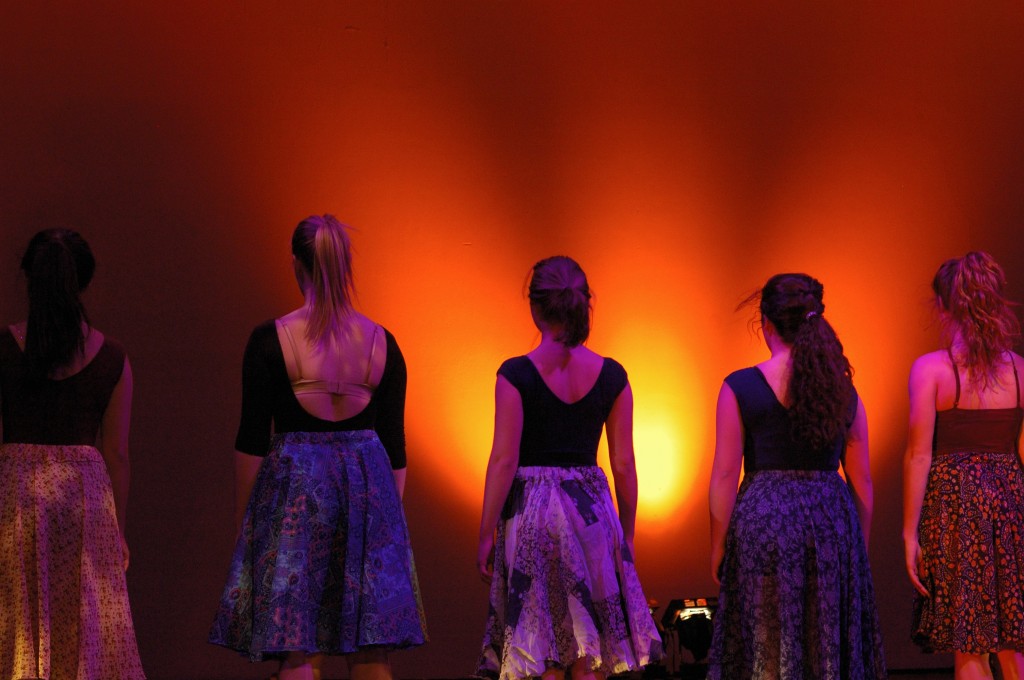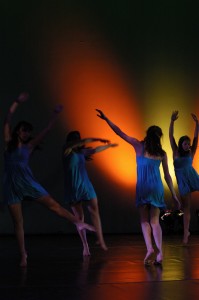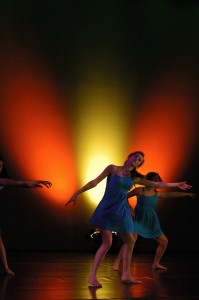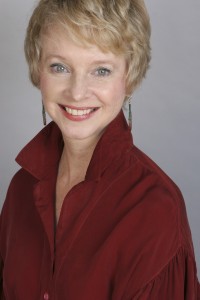(also known as “What’s happening to my body??!!!!”)
by Jan Dunn, MS
You’re a 12 year old dancer, on the path to a professional career, with daily classes / rehearsals / several performances a year. If you’re a girl, you’re getting really good at knocking off double pirouettes on pointe (sometimes triple!), or if you’re a guy, doing a double (or triple) tour en l’air. And then – you start growing fairly fast, and suddenly you can barely do a single turn – What’s going on??!!!

Well, what’s going on is that you’re starting your Adolescent Growth Spurt – AGS for short. This is the age (usually between 11-14 for girls, a little later for boys) when your body is making very fast changes, and it can be challenging for both you as a dancer, and for your teacher as well. But the good news is that it can be a lot less challenging if everyone knows what’s going on, what to expect –and that things will get better! It’s a phase everyone has to go through, so being knowledgeable and prepared will go a long way towards feeling ok with the changes that are happening.
So here’s what’s going on:
The AGS usually lasts between 18-24 months – it’s very individual, so comparing yourself to your best friend who’s the same age won’t help!
I was given a powerful visual reminder of this at an IADMS conference, when Rachel Rist, head of Dance at Tring Park Arts Educational School in the UK (a very prestigious arts school – call it the Julliard of England!) gave a presentation on AGS, and had 5 of her dancers on stage standing next to each other. Each girl was within a month of being exactly the same age (13), and every one of them looked SO different — one looked like a 10 year old, one like a 17 year old, and all stages in between.
Rachel did that presentation to show us how individual the AGS can be – and to remind teachers that dancers going through this period will vary greatly in what they can do / what their bodies need (in other words, one size does NOT fit all!).
So here are some AGS facts:
- the long bones (arms and legs) grow faster than the torso
- those bones do not grow symmetrically – that means there can be temporary leg (or arm) length differences. If there is asymmetry present in the leg bones (which is common), it can can cause a temporary scoliosis in the spine (a side curvature).
- in the spine, the thoracic spine (rib cage area) grows faster than the lumbar spine (low back), or cervical area (neck).
- muscles and ligaments often do not grow as fast as the bones, so they become short and tight – i.e, you lose flexibility.
- the “growth plates” at the ends of the long bones (this is where the new bone is added) become very fragile and susceptible to injury.

In your dance life, this can mean:
- less flexibility (why your developpe won’t go as high
- loss of balance (why you can’t do double turns)
- loss of endurance and stamina (an hour rehearsal was no problem before; now you’re exhausted)
- loss of motor control (why you suddenly become “klutzy”)
- decreased self-awareness of your body (i.e, your body is growing fast, and your Central Nervous System needs time to catch up)
- unexpected weight gain, especially for girls (breasts / buttocks)
- loss of self-esteem (i.e, you don’t feel good about yourself, when you can’t do things that came easily 3 months before)
Dancers are especially vulnerable to injuries during the AGS, some of which can have long-term effects. Some of the more common injuries that can occur are:
- an increase in strained muscles, like hamstrings (because of those muscles becoming short and tight)
- Achilles tendon problems (same reason)
- knee problems – Osgood-Schlatter Disease: pain just under the patella, on the tibial tuberosity where your patellar tendon attaches to the tibia (Translation: the bump on the shin bone, just under the knee – that’s where the tendon that attaches to the thigh muscles comes over the your kneecap, and attaches down on the shin). Sometimes when we say we have “growing pains” in the knee area, that can be one cause.
- hip problems
- shin splints / tibial (the shin bone) stress fractures
Another physical concern for girls during this period is the possibility of developing the Female Athlete Triad. This is a combination of three things that can cause problems with athletic girls during the AGS –
1) disordered eating
2) menstrual problems
3) bone loss
All of these topics deserve their own separate article, to discuss how important they are for women dancers! But for now, be aware that a healthy diet is SOOO important for dancers (we’ve had several really good articles on that already), especially during the AGS.

If you’re a teacher, understanding how the AGS affects your dancers will go a long way towards helping them work through this period in a positive way, moving forward in their dance life. There are some specific things you can do for them at this time, such as:
You can reduce:
- the amount of impact work, especially big jumps / jumps on one foot
- the amount of pointe work on one foot
- the amount of weight bearing on the knees
- the number of grande plies
You can increase:
- the amount of stretching
- amount of time spent on “core control” – strengthening trunk control, i.e, “finding center”
- the amount of time spent on proprioceptive training
- kinesthetic awareness, thru the use of appropriate language, imagery, etc.
- self-esteem
- the amount of time spent on specific conditioning, whether in or out of class
- communication with parents, on concerns surrounding AGS
And always remember the essential elements of good teaching:
- a sound body conditioning program for dancers can be begin as early as age 8-9
- be as informed as you can be, embracing all the current knowledge about how we can best train dancers in a safe and effective manner
- provide a positive, nurturing environment for your students
IADMS (International Association for Dance Medicine and Science) has an excellent Resource Paper on the AGS –you’ll find it under “Resources for Teachers”, available on the website whether you are a member or not.
Soooo…if you’re that 12 year old dancer who suddenly can’t do the double pirouettes / tour en ‘lair you could do 3 months ago, I hope this Dance Wellness post has given you some new knowledge about “What’s going on with my body ??!!”, and the understanding that you WILL be back to those double (and triple!) turns again:)!. Just take some deep breaths and give your new body time to grow into itself!!

Editor Jan Dunn is a dance medicine specialist currently based on the island of Kauai, Hawaii, where she is affiliated with Pilates Plus Kauai Wellness Center in Princeville. She is also a Pilates rehabilitation specialist and Franklin Educator.
Originally a dancer / choreographer, she became university dance faculty, most recently as Adjunct Faculty, University of Colorado Dept. of Theatre and Dance. Her 28 year background in dance medicine includes 23 years with the International Association of Dance Medicine and Science (IADMS) – as Board member / President / Executive Director – founding Denver Dance Medicine Associates, and establishing two university Dance Wellness Programs.
Jan served as organizer and Co-Chair, International Dance Medicine Conference, Taiwan 2004, and was founding chair of the National Dance Association’s (USA) Committee on Dance Science and Medicine, 1989-1993. She originated The Dance Medicine/Science Resource Guide; and was co-founder of the Journal of Dance Medicine & Science. She has taught dance medicine, Pilates, and Franklin workshops for medical / dance and academic institutions in the USA / Europe / Middle East / and Asia, authored numerous articles in the field, and presented at many national and international conferences.





Thank you for this informative article that I shall apply to my teaching and to the anxiety over my adolescent students!
And thank you for taking the time to let us know that you liked it! All the best!
Thank you so much for posting. My 14 year old has been really struggling through a growth spurt. She has been a competitive gymnast since she was 5 but quit gymnastics last year to begin her new passion of ballet. Her dancing took off fast and furious, as she was extremely flexible, strong, and naturally graceful. But then, what seemed like happened overnight, everything changed. She quickly lost ALL flexibility & strength. Her doctor assured us it was a growth spurt. It has been about 6 months and we have seen little improvement although she is (carefully) stretching daily. Discouragement is trying to overtake her and she has been tempted to quit ballet, at least periodically. I think she feels alone in this battle. And embarrassed she can no longer keep up with her classmates. So again, thank you. Not only has this article helped put this Mom at ease, but I believe it will help educate and encourage my daughter to fight through and overcome this season of her life.
I’m so glad that you found this article helpful! Thank you so much for taking the time to comment, and keep an eye out for more articles on dance wellness soon. Take care, and all the best to you and your daughter!
Superb Jan. Thank you so much.
Thank you for taking a moment to comment Philip – I will pass it along to Jan!